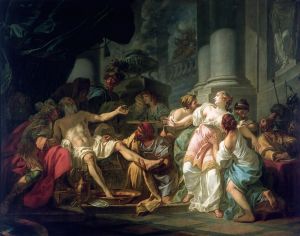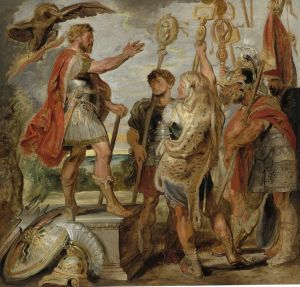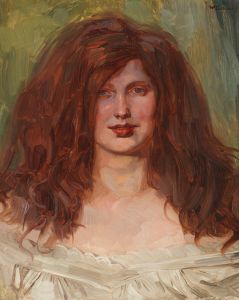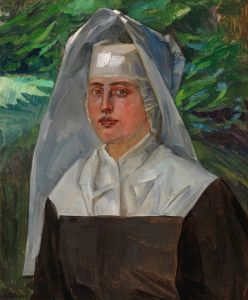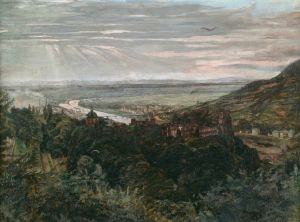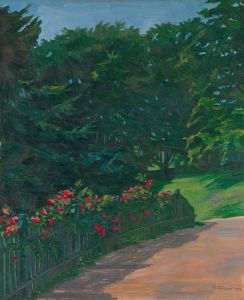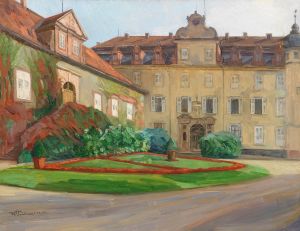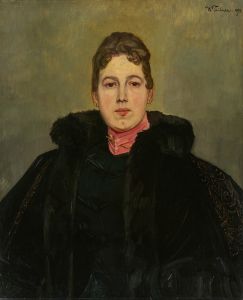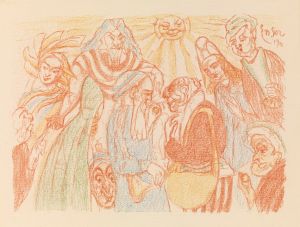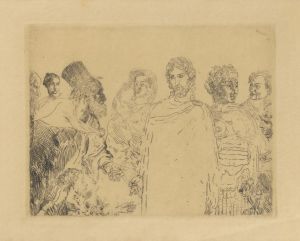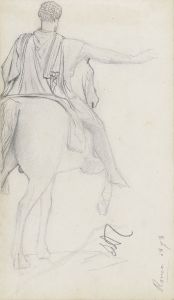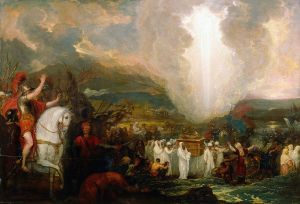Caesar am Rubicon
A hand-painted replica of Wilhelm Trübner’s masterpiece Caesar am Rubicon, meticulously crafted by professional artists to capture the true essence of the original. Each piece is created with museum-quality canvas and rare mineral pigments, carefully painted by experienced artists with delicate brushstrokes and rich, layered colors to perfectly recreate the texture of the original artwork. Unlike machine-printed reproductions, this hand-painted version brings the painting to life, infused with the artist’s emotions and skill in every stroke. Whether for personal collection or home decoration, it instantly elevates the artistic atmosphere of any space.
Wilhelm Trübner was a notable German painter associated with the Realist movement. He was born on February 3, 1851, in Heidelberg, Germany, and became known for his contributions to the development of German art in the late 19th and early 20th centuries. Trübner's work is characterized by his focus on realism and his ability to capture the essence of his subjects with a keen eye for detail and a strong sense of composition.
One of Trübner's works is titled "Caesar am Rubicon," which translates to "Caesar at the Rubicon." This painting depicts the historical moment when Julius Caesar crossed the Rubicon River in 49 BC, a decisive event that led to the Roman Civil War. The phrase "crossing the Rubicon" has since become a metaphor for making an irreversible decision.
In "Caesar am Rubicon," Trübner captures the tension and gravity of this historical moment. Although specific details about the painting's composition and style are not widely documented, it is likely that Trübner employed his realist techniques to convey the drama and significance of Caesar's decision. His use of color, light, and shadow would have been instrumental in creating a vivid and engaging portrayal of this pivotal event in Roman history.
Trübner's work often reflects his interest in historical and mythological themes, and "Caesar am Rubicon" fits within this context. By choosing to depict Caesar at this critical juncture, Trübner aligns himself with other artists who have explored similar themes of power, leadership, and the consequences of bold actions. His ability to bring historical events to life through his art has earned him a place among the respected painters of his time.
Wilhelm Trübner's career was marked by his involvement with various art movements and his interactions with other prominent artists of his era. He studied at the Academy of Fine Arts in Karlsruhe and later in Munich, where he became associated with the Leibl Circle, a group of artists who were influenced by the realism of Wilhelm Leibl. Trübner's work was also influenced by his travels and exposure to different artistic styles, including Impressionism, which can be seen in some of his later works.
Throughout his life, Trübner held several teaching positions, including a professorship at the Academy of Fine Arts in Karlsruhe. His influence extended to his students, and he played a significant role in shaping the next generation of German artists. Trübner's legacy is reflected in his contributions to the development of German realism and his ability to capture the essence of his subjects with precision and depth.
While "Caesar am Rubicon" may not be as widely recognized as some of Trübner's other works, it remains an example of his skill in depicting historical themes with a realist approach. His paintings continue to be appreciated for their technical proficiency and their ability to convey complex narratives through visual art.





